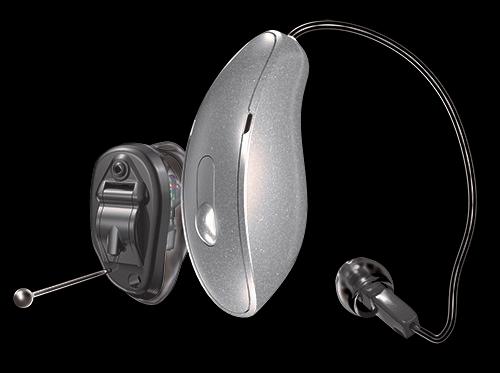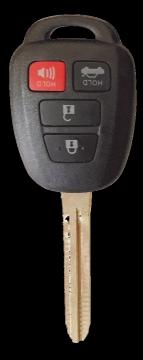TIDBITS® GOES SHOPPING AT DEPARTMENT STORES
by Kathy Wolfe
When the going gets tough, the tough go shopping! This week, Tidbits shops around some of the world’s most famous department stores.
• When Rowland Macy opened a dry goods store on New York City’s Sixth Avenue in 1858, in his wildest dreams he couldn’t have predicted the $24 billion in global net sales of the chain today. Macy’s first-day sales totaled $11.08 in 1858, about $390 in today’s dollars. The company’s flagship store located in Herald Square opened in 1902, with one million square feet spread across ten floors. Later expansions brought the total to 2.5 million square feet. The flagship store even has its own in-store jail, Room 140, where suspected shoplifters are detained. Macy’s inaugurated its annual Thanksgiving Day parade in 1924, an event that has been held every year except during World War II. The giant helium balloons made their debut in 1928.
• Macy’s has more than 94,000 employees in their nationwide chain of 512 stores. The flagship store had the title of world’s largest store until 2009 when the Shinsegae Centum City department store in Busan, South Korea, nabbed the record with 5.847 million square feet, nearly three times the size of Macy’s. turn the page for more!
Of The Mid-Ohio Valley
is Published & Distributed Weekly By: CindAl Publishing Company 812 55th St. Vienna, WV 26105 e-mail: alan@tidbitsmov.com
Advertising: 304.210.3812
We reserve the absolute right to accept, reject, discontinue or refuse any advertisement personal or commercial that we deem may not be conducive for our publication or Tidbits®. The publisher does not assume any responsibility for the claims of its advertisers. Tidbits® is committed to remain a family oriented publication. www.tidbitsmov.com
DEPARTMENT STORES
(continued):
• Also located in Manhattan’s Herald Square is the flagship location for Saks, a store which opened in New York City in 1902. The original Saks store was in the shopping district of Washington, D.C., a men’s clothing store established by 20-year-old Andrew Saks in 1867. By 1896, Saks had stores in five cities. Andrew’s son Horace opened the 11-story Fifth Avenue store in 1924. The previous year, Saks had been purchased by Gimbels, which was owned by Horace Saks’ cousin, Bernard Gimbel, for $8.1 million. After just a year of managing the luxury store for Gimbel, Saks died suddenly, and the company was taken over by the Gimbels.
• Gimbel’s operated for 145 years, founded by a German immigrant, with its first store opening its doors in Indiana in 1842, moving on to Milwaukee in 1887. Gimbel’s New York store opened in 1910, one block south of Macy’s with a building cost of $17 million ($500 million today), boasting a million square feet of space and 4,780 employees. Gimbel’s Philadelphia store originated the Gimbel’s Thanksgiving Day Parade in 1920, which is the oldest holiday parade, ahead of Macy’s by four years. The Philadelphia store was the first department store in the world with an escalator for its customers. By 1930, there were 20 Gimbel’s stores, with sales of $123 million ($2.2 billion in today’s dollars), making it the largest department store chain in the world. The total increased to 53 by 1965. By the 1980s, Gimbel’s was falling behind the competition, perhaps because their efforts were focused on the Saks stores, the real money-maker. Management failed to keep the stores up-to-date and in 1987, the remaining 35 Gimbel’s stores were closed and the properties sold.

In this issue of TidbitsMOV our boy Tommy Tidbits is hiding
When you find him, to enter the weekly contest, please send us a message including your name, POSTAL MAIL address, the issue number you are referring to and which ad is hosting Tommy for the week! Visit www.tidbitsmov.com or send the answer with the above information to alan@tidbitsmov.com OR you may send us a private message to our Facebook page - Tidbits MOV. PLEASE do not post the answer directly to the page - that ruins the fun for everyone. All winners will be drawn randomly from correct responses and will be posted weekly. As with all our contests, though you are welcome to play every week, you are only eligible for one winner per household per month.
DEPARTMENT STORES
(continued):
• Harrod’s, London’s one-million-square-foot department store was opened by 25-year-old Charles Harrod in 1824 in a one-room shop as a seller of draperies, fabrics, and clothing. In 1834, Harrod’s added a wholesale grocery and tea store. The store continued to expand until 1883, when it burned to the ground just before Christmas. A new building was promptly built on the same site, and served prestigious customers, among them Oscar Wilde, Charlie Chaplin, Sigmund Freud, Beatrix Potter, and many members of the British royal family. The store contained one of the world’s very first escalators. Today’s store is home to 330 departments, including a 42,000-sq-ft. shoe department offering upwards of 100,000 pairs of footwear, as well as 23 restaurants, a spa and salon, pharmacy, tailor, and a personal shopping service. On a peak day, up to 300,000 customers visit the store.
• Brothers Joseph and Lyman Bloomingdale opened their doors in 1861 in New York City’s Lower East Side area, selling hoop skirts. They expanded to a new location and began carrying European women’s fashion in 1872, with first day sales of $3.68. By 1886, Bloomingdale’s covered an entire city block at 59th Street and Lexington Avenue. In order to survive the Great Depression, Bloomingdale’s merged with Federated Department Stores in 1930, the same conglomerate that acquired Macy’s in 1994. Today, there are 54 Bloomingdale’s stores.
• Marshall Field came to Chicago in 1856, and began working at the city’s largest dry goods firm. By 1865, he was partners in Field, Leiter, & Co., and within two years was reporting sales of $12 million, nearly $215 million in today’s money. The store burned to the ground in Chicago’s Great Fire of 1871, but reopened just a few weeks later, due to the brave efforts of the employees who loaded as much of the store’s expensive merchandise as possible onto wagons, and removed it out of the fire’s path.
DEPARTMENT STORES
(continued):
• When 16-year-old Johan Nordstrom landed in America in 1887, he had $5 in his pocket. He was a Swedish immigrant who spoke not a word of English. After ten years of working in mines, lumber camps, sawmills, and shipyards, he headed north to the Klondike to seek his fortune in gold. Two years later, Nordstrom was in Seattle, $13,000 richer. He and a shoemaker he had met in Alaska pooled their money and opened a shoe store, Wallin & Nordstrom, in 1901, selling $12.50 worth of merchandise on their first day in business. By 1905, annual sales were $80,000. The men opened a second Seattle store in 1923, and in 1929, both retired and sold their shares to Nordstrom’s sons. In 1960, Nordstrom’s had eight shoe stores, with the downtown Seattle store holding the honor of largest shoe store in America. The stores were strictly shoes until 1963 when they expanded to include women’s clothing, with men’s and children’s clothing added shortly afterward. By 1967, annual sales exceeded $40 million. There were no Nordstrom stores on the East Coast until 1988, and none in New York until 1995. Although 16 stores had to be closed during the COVID pandemic, the company has grown from a single shoe store to 362 stores in the U.S., located in 42 different states and U.S. territories, with annual sales exceeding $15 billion. The fourth generation of the Nordstrom familystill heads up the company.
• Kohl’s didn’t start out as a department store, but rather as a corner grocery store in Milwaukee, founded by Polish immigrant Maxwell Kohl in 1927. Kohn expanded his operation to a supermarket in 1946, and by 1962 his chain was the largest in the Milwaukee area, paving the way for Kohl to branch out into the department store business. Today, there are more than 1,100 Kohl’s stores located in 49 states, with annual sales exceeding $16 billion.
HENSLER’S
HENSLER’S
TOWN & COUNTRY TOWN & COUNTRY
MARKET MARKET
Hush Puppies: A Southern Treat for Busy Days
As we settle back into our busy schedules with summer behind us and autumn schedules ahead of us, it's more important than ever to carve out moments of joy and culinary pleasure purely for pleasure's sake. Enter homemade hush puppies a Southern classic that transforms simple ingredients into golden nuggets of delight. Whether you're planning a fun weekend brunch or adding a special side to your weeknight dinners, hush puppies bring a taste of tradition to your table What makes hush puppies truly special is their simplicity. With just a handful of pantry staples cornmeal, flour, buttermilk and a touch of seasoning you can whip up these crispy, tender bites in no time. The batter comes together quickly, and with a quick fry, you have a basket of warm, savory hush puppies ready to serve.
Versatile hush puppies can be paired with just about anything. Serve them alongside fried fish, barbecue or even with jam for a sweet treat. If you want to take them to the next level, the recipe below for a tangy remoulade sauce adds just the right amount of zing.
HUSH PUPPIES
Yield: 36 hush puppies
Total Time: 15 minutes
What You'll Need:
3 to 4 cups vegetable oil for frying
2 cups yellow cornmeal
1 cup all-purpose flour
1 egg, beaten
3/4 teaspoon table salt
1/4 teaspoon baking soda
2 cups buttermilk, or whole milk
Begin by combining cornmeal, flour, egg, salt, baking soda and buttermilk or milk in a large mixing bowl. Stir the mixture until it becomes smooth with no lumps. The batter will be stiff. Heat vegetable oil in a cast-iron skillet or a large heavy fry pan over mediumhigh heat until it reaches a temperature of 350 F. You can test if the oil is ready by dropping a small amount of batter into it if it sizzles and floats, it's ready. Be careful not to overheat the oil, as it may result in uneven cooking with burnt outsides and raw insides.
Using either two spoons or a small ice cream scoop, carefully place small portions of the batter into the hot oil. After about 10 seconds, the hush puppies will rise to the surface and start to turn golden brown. Fry them for about 5 minutes or until they achieve a uniform goldenbrown color, turning them occasionally to ensure even cooking. Once cooked, remove the hush puppies from the oil and drain them on paper towels to absorb any excess oil. Continue frying the remaining batter in small batches, adding 4 to 6 hush puppies to the oil at a time. This will help maintain the oil temperature and ensure consistent frying results.
Diva Tip: Hold the finished hush puppies in a 200 F oven until you're ready to serve so everyone gets their hush puppies while they're nice and hot. Here's a companion to your crispy hush puppies: a zesty Louisiana remoulade sauce. This traditional condiment boasts a blend of tangy mayonnaise, piquant mustard, aromatic herbs and seasonings EASY LOUISIANA REMOULADE
What You'll Need:
1 cup mayonnaise
1 tablespoon Creole or whole-grain mustard
1 tablespoon ketchup
1 teaspoon Worcestershire sauce
1 teaspoon cider vinegar
1 teaspoon garlic powder
1 teaspoon paprika
1/4 cup green onions, sliced
Salt and pepper, to taste
Louisiana style hot sauce to taste (optional)
Here's How:
Blend all ingredients in a small bowl. Let this rest in the fridge for 20 minutes to let the flavor marry. Whether you're treating yourself, your family or your friends, hush puppies are a delightful way to celebrate the simple pleasures in life.
***
Lifestyle expert Patti Diamond is the pennypinching, party-planning, recipe developer and content creator of the website Divas On A Dime Where Frugal, Meets Fabulous! Visit Patti at www.divasonadime.com and join the conversation on Facebook at DivasOnADimeDotCom. Email Patti at divapatti@divasonadime.com (c) 2024 King Features Synd., Inc.
A Southern classic: Golden, crispy hush puppies served with a zesty remoulade
PHOTO CREDIT: www.JasonCoblentz.com
1090 S. Pleasants Hwy St Marys WV 9a - 7p Sun 10-5
Therapeutic Footwear
BEAUTIFUL BODY: SKIN
It’s the largest organ of the human body! This week, Tidbits directs your attention to your skin, which accounts for 15% of your body weight.
• Every inch of skin contains 19 million skin cells, 650 sweat glands, 20 blood vessels, and 1,000 nerve endings. Total body surface area is between 15 and 20 sq. feet (1.5-2.0 sq. m). The skin on the forearm has a thickness of about 0.051 inches (1.3 mm).
• The skin is made up of three primary layers –the epidermis, the dermis, and the hypodermis. The epidermis is the waterproof layer that serves as a protective wrap over the body’s surface and as a barrier to infection. There are no blood vessels in the epidermis, which is as thin as a sheet of paper.
• The skin’s middle layer, the dermis, is a thicker, tougher connective tissue, containing hair follicles, nerve endings, millions of sweat glands, and more than 10.5 miles (17 km) of blood vessels. It holds collagen and elastin that gives skin its shape and elasticity.
• The hypodermis is the inner layer is mostly fat and connective tissue that lends itself to the skin’s structure and attaches it to muscles.
• Melanocytes are the cells that produce melanin, the pigment that determines skin color. These cells are located in the epidermis, with 60,000 found in a square inch of skin. The more melanin in the cells, the darker the skin. In the condition known as albinism, the melanocytes don’t produce any melanin.
• The number of sweat glands in the skin ranges between two and four million. Normal sweating is about a quart of fluid per day. Continued page #7)
Be a champion pet sitter
DEAR PAW'S COR-
NER: I'm 13 years old and want to make money by being a pet sitter and dog walker. To try it out, my dad suggested that I pet sit for the neighbor who is going on vacation for two weeks. They agreed! I'm really excited. What tips do you have so I do a good job? Austin in Portland, Maine
DEAR AUSTIN: What a great idea! You can try out pet sitting and see if you like it, and your dad is there to give support and advice. Here are a few tips: Bring a notebook and pen with you to every pet sitting visit.
Talk to the pet owner before they leave. Get all of the pet's health information. Find out what time they need to be fed and any medications they need to take. Get their veterinarian's number and any special instructions. Find out where the food, treats and leash are stored. (Write this all in the notebook!)
Keep to the agreed-upon time to visit and/or walk the pet. It's important for the pet to stay on a regular schedule, and it builds trust with your customer. Do not feed the pet any food or treats not provided (or specified) by the owner. Contact the owner if you have additional questions or if an emergency arises. These are just the basics. As you build your pet-sitting empire, you will encounter different situations and will learn the best ways to respond. Your parents can help, and so can that trusty notebook! During and after every visit, review your notes about the experience and think about how you can do a better job or accomplish certain tasks more effectively. Send your tips, comments or questions to ask@pawscorner.com.
(c) 2024 King Features Synd., Inc.
SKIN
(continued):
• The body’s skin renews itself every 28 days. The deepest layer of the epidermis is constantly generating new cells called keratinocytes, made up of the strong protein keratin. These cells slowly move up in a layer, taking nearly a month to reach the surface as dead cells flake off, a process that might occur more than 1,000 times over the course of a person’s lifetime.
• Collagen, the most abundant protein in the body, provides the skin’s youthful elasticity. When the body is under stress, it produces a high level of the hormone cortisol and other inflammatory molecules that break down the skin’s collagen molecules. Decreased collagen levels result in skin that’s “crepey,” wrinkled, or sagging, stiffer, less flexible tendons and ligaments, along with joint pain due to worn cartilage. In addition to stress, smoking, too much sugar and refined carbohydrates, and exposure to ultraviolet light reduce collagen production.
• The skin on the soles of the feet is up to seven times thicker than the skin of the eyelids.
• The skin of the body’s lower legs is drier than other places because legs have fewer oil glands than any other area of the body. .
• Skin becomes thinner with age, is more easily damaged, bruises more easily, and decreases in its ability to heal itself along with decreasing in volume and elasticity. Aging skin receives less blood flow and the epidermis thins.
• The skin condition known as psoriasis occurs when skin cells in the affected area grow rapidly, resulting in excess skin buildup and inflammation, producing a red, scaly rash. This autoimmune condition can lead to inflammation of other tissues and internal organs, and a greater risk of heart disease and diabetes.
* When preparing outdoor furniture for winter storage, it's important to give it a nice cleaning. If you have a truck, why not load it up and bring it to the local self-serve car wash? The specialized brushes make it easy to clean right there in the back of the vehicle, and a pressure rinse gets soap and dirt from all the nooks and crannies.
* "While at a backyard barbecue now that the weather has turned nice out (down in the South, anyway), I learned this trick from a neighbor. Put hot dogs in the slow cooker. Don't add water or anything. They taste really good without taking up space on the grill."
J.V. in Alabama
* To keep algae from growing in your backyard birdbath, add a few copper pennies. Or you can get a small piece of copper pipe from the home-improvement store. It keeps the algae from getting out of control.
* When you need an extra garbage bag, like during a party or while doing lawn chores, try this cool trick: Use a large pop-up laundry bin, and line it with a lawn and leaf garbage bag.
Use chip clips to secure it at the top if you need to.
* "We keep a regular size galvanized steel trash can with lid out on our deck for the kids' toys. It's big enough to hold everything, convenient enough to drag around the yard to clean up, and the lid protects the toys from the weather and bugs!" W.K. in Illinois
* "I had a plastic storage bin that cracked and I was about to throw it out when my son stopped me. He cut holes in either side and used it to cover the outdoor pipes that stick up out of the ground. Now they will be protected from cold temperatures, and from the weed eater through the rest of fall. My boy!" T.R. in South Carolina
Send your tips to Now Here's a Tip, 628 Virginia Drive, Orlando, FL 32803.
(c) 2024 King Features Synd., Inc.





















































































































































